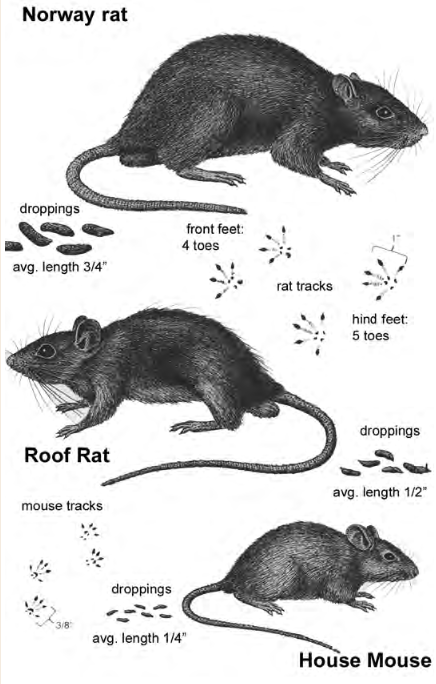Author: Emily Cabrera
Squirrels, chipmunks, rats, mice, and various overwintering insect pests are among the most common critters that get inside through cracks and gaps in the foundation of homes during winter months – looking for warmth and food. It’s important to prevent these critters from entering homes and buildings, as they can carry various parasites and can be a major nuisance, given the overwhelming numbers associated with some of them Not to mention, they can spoil stored food and can tear up insulation and electrical!
Dan Suiter, an Extension Entomologist and coordinator for the Structural Pest Management Program and the Center for Urban Agriculture on the UGA Griffin Campus says “In pest control, it’s not a problem until it’s a problem, so prevention is key”. Critters can enter through very small spaces, so Suiter advises that homeowners do a thorough walk-about to identify places they may exploit for entry. Clean up brush piles and any trash around the outside of the house. Plug holes and screen vents. Suiter recommends homeowners use copper wool mesh to plug up holes that mice may be entering through. Rats and mice can chew through steel wool, but the woven structure of copper wool is much more difficult to get through. Or, a simple mixture of steel or copper wool with a caulking agent also works well to seal up gaps.
“Being warm-blooded creatures, rats and mice have high metabolisms and need to eat to survive over the winter” Suiter says. Make sure you store all dried goods in airtight containers to prevent critters from getting into the pantry. And clean up any crumbs or spills in and around the house that may be attracting them to the vicinity.
Homeowners can also use snap traps to dispatch unwanted rats and mice. Sticky traps are not recommended, they are not humane and it’s not safe for homeowners because the animals are still alive on the traps. Place a very small amount of an aromatic bait (think peanut butter or pulled pork) under the hook and place snap traps in attics or other spaces that might be housing critters. Make sure that just a small amount of bait is tightly packed under the hook so that it’s difficult to remove by the rodent. Place traps along walls, as mice tend to skirt around rooms close to the wall. Check on traps daily and dispose of dead animals immediately. Re-set traps as often as necessary. It’s often a good idea to place bait on traps but without setting the snap, to allow the rodent to become comfortable with bait removal, before setting the snap.
If you see animal droppings inside, or know for sure animals have made their way indoors, call a pest control service. While nuisance animals can be trapped, it may be wise to let professionals handle the job, as animals can potentially be diseased or aggressive and professionals can help to identify the location of entry and will assist in properly sealing those areas.

Image Credit: Bugwood.org – Purdue Extension